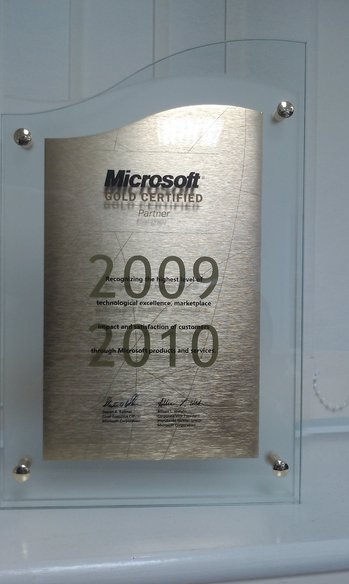Tapping your (big) partner’s brand – six strategies that work
In almost any tech industry segment you’ll find a few very large companies surrounded by dozens to hundreds of complementary smaller companies that do everything from filling in functionality gaps to adding industry specialization or providing service and support. This ecosystem is important to the big company’s success and most, to varying degrees, works to grow and nurture their ecosystems.
But if you’re a small- to mid-size company, being part of a big company ecosystem is anything but a free ride to success. This is especially true from the PR and marketing side. Many times I’ve heard small company execs talk about how signing a deal with Oracle or Microsoft will lead to instant credibility and visibility, followed shortly by big sales. They are usually crestfallen when it doesn’t materialize quite the way they thought.
 Big companies have a lot going on. Their PR teams and product managers are invariably overworked, and have a huge number of mouths to feed. That joint press release you wanted? Not going to happen. Maybe a quote, if you’re lucky. And the response from the media is worse? Reporters and bloggers simply do not care that you’ve become a Gold Certified Platinum whiz bang partner of the year. Not only do they not care, but will get pissed if you even send them the press release.
Big companies have a lot going on. Their PR teams and product managers are invariably overworked, and have a huge number of mouths to feed. That joint press release you wanted? Not going to happen. Maybe a quote, if you’re lucky. And the response from the media is worse? Reporters and bloggers simply do not care that you’ve become a Gold Certified Platinum whiz bang partner of the year. Not only do they not care, but will get pissed if you even send them the press release.
For sure, there is huge brand-building potential from partnering with a big company. How do you tap into that potential, and ride the coattails of your big-brand partner? Here are six strategies I’ve found to be way more effective than issuing a press release about your partner status.
Target the partner’s bloggers – Most big companies have a thriving cadre of bloggers at various levels within the company. These are not professional journalists. They are looking for ideas and content assistance. By educating them about how you fit in the big company’s ecosystem and help boost sales or increase customer satisfaction, they may be inclined to write about you in their blog, or you could even supply a guest post. Be sure to read the relevant blogs and comment often.
Create compelling content – As noted, big company marketing types are typically very busy. That means they won’t be doing any work on your behalf. However, if you come up with some smart contributed articles, they will often be willing to be quoted, are even add their name to the author byline. Editors will be much more interested in the article if there’s a big name on the byline.
Support initiatives – Most of the time, the major players won’t give small upstarts the time of day. That can change when the big company has a major product launch. They are often looking for endorsements and quotes to show how the industry is backing the new initiatives. Be ready with Johnny-on-the-spot press releases, quotes and spokespeople.
Partner events – The big partner events can be a good opportunity to make some noise. Ideally, you can work your way into one of the keynote speeches. If that doesn’t work, be sure to place as many of your customers, technical and product experts on panels and workshops as possible, and then funnel information to reporters and bloggers covering the event.
Partner beat reporters – Media outlets, whether online or print, devote inordinate amounts of space to big companies. Many, such as the Wall Street Journal for instance, have reporters fully dedicated to only covering IBM or Microsoft. It’s worthwhile letting these reporters know how your company fits into the space. They won’t write a dedicated story about you, but you can get mentioned in other coverage.
Self-publishing and social media – Scrapping for coverage in a brand-centric world is hard work. As a supplement, you can control your message and build your brand on your own. By using social media tools, and publishing articles, videos and podcasts on your websites you can create significant buzz. This is where engaging the partner can be useful to creating more exposure and building your credibility. For example, you could interview the partner for a news podcast and use that as the basis for a thought leadership, brand building effort.
Working with big partners is never easy. It takes real organizational commitment to building the relationship in the first place and developing product and sales opportunities. The same goes for trading on the partner’s brand name. Done right, however, the payoff can be significant.
What communication strategies have you found to be successful on the partner front?
Author: Brian Edwards
Brian Edwards is a talented business and technology communications expert with more than 25 years of experience in high-tech public relations and marketing.
